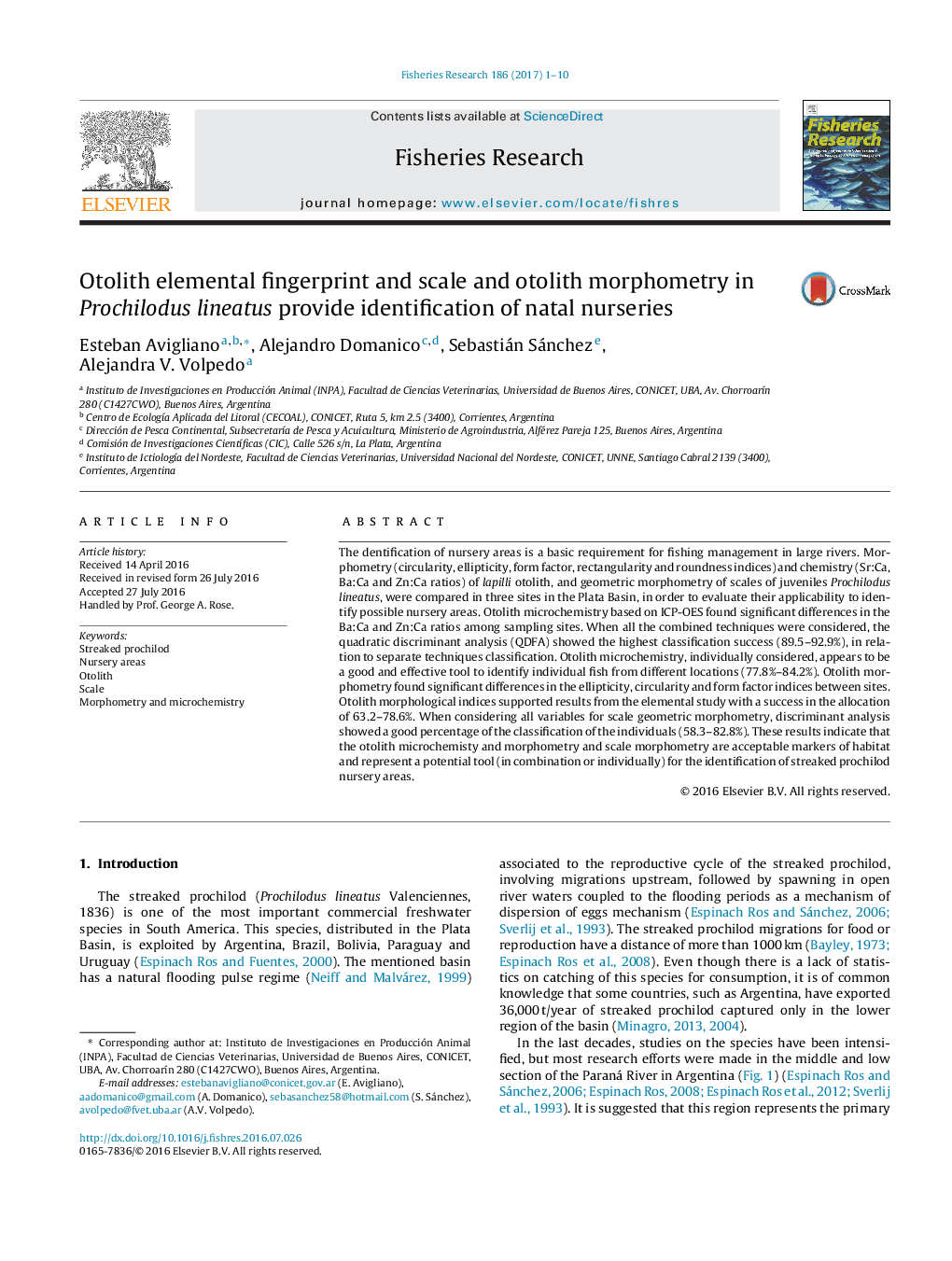| Article ID | Journal | Published Year | Pages | File Type |
|---|---|---|---|---|
| 4542595 | Fisheries Research | 2017 | 10 Pages |
•Otolith Ba:Ca and Zn:Ca ratios were different among sample sites.•Otolith morphometry found differences in three indices between sites.•Scale geometric morphometry analysis showed allocation success of 58.3–82.8%.•Otolith and scale morphometry and microchemistry were good markers of habitat.
The dentification of nursery areas is a basic requirement for fishing management in large rivers. Morphometry (circularity, ellipticity, form factor, rectangularity and roundness indices) and chemistry (Sr:Ca, Ba:Ca and Zn:Ca ratios) of lapilli otolith, and geometric morphometry of scales of juveniles Prochilodus lineatus, were compared in three sites in the Plata Basin, in order to evaluate their applicability to identify possible nursery areas. Otolith microchemistry based on ICP-OES found significant differences in the Ba:Ca and Zn:Ca ratios among sampling sites. When all the combined techniques were considered, the quadratic discriminant analysis (QDFA) showed the highest classification success (89.5–92.9%), in relation to separate techniques classification. Otolith microchemistry, individually considered, appears to be a good and effective tool to identify individual fish from different locations (77.8%–84.2%). Otolith morphometry found significant differences in the ellipticity, circularity and form factor indices between sites. Otolith morphological indices supported results from the elemental study with a success in the allocation of 63.2–78.6%. When considering all variables for scale geometric morphometry, discriminant analysis showed a good percentage of the classification of the individuals (58.3–82.8%). These results indicate that the otolith microchemisty and morphometry and scale morphometry are acceptable markers of habitat and represent a potential tool (in combination or individually) for the identification of streaked prochilod nursery areas.
